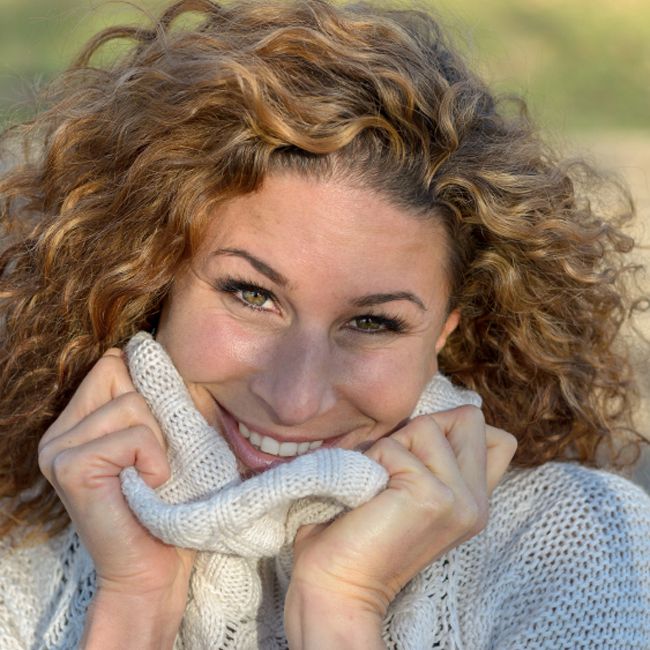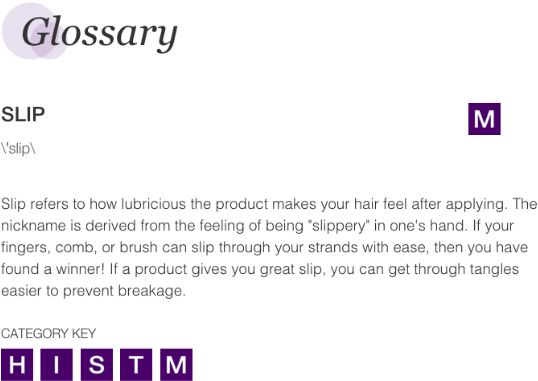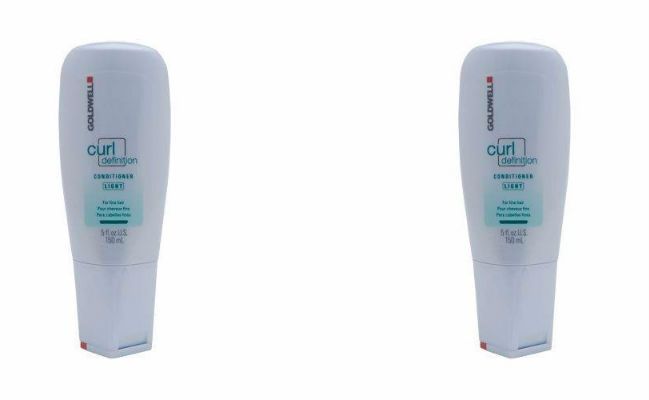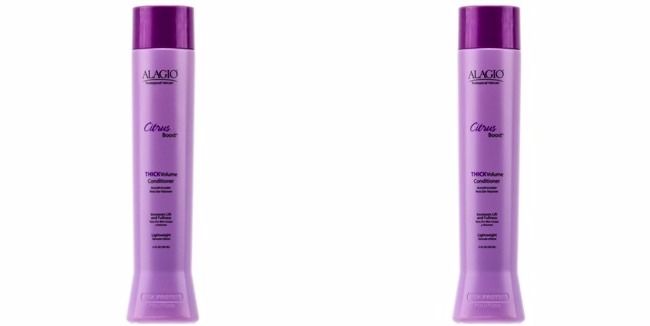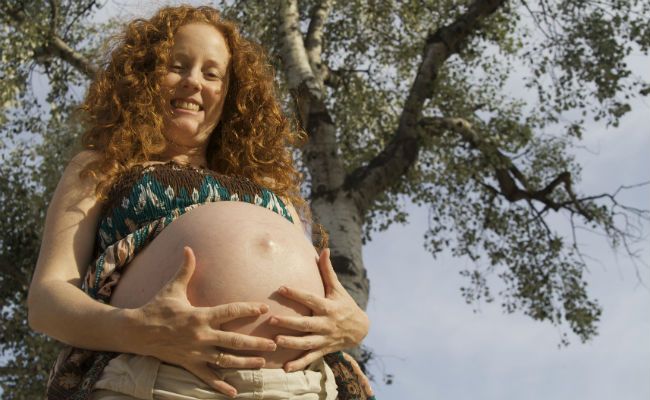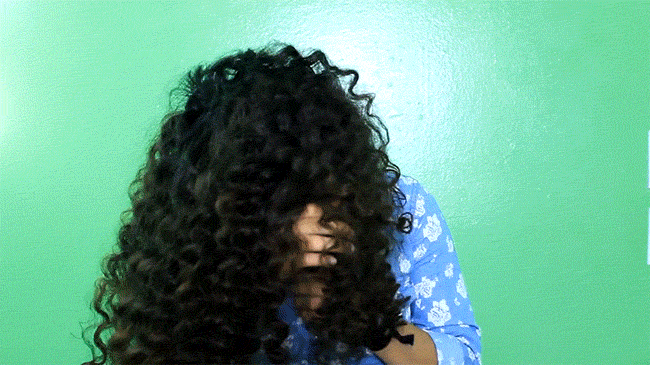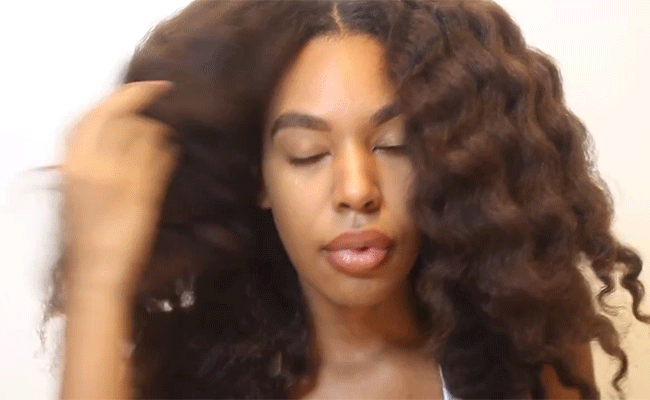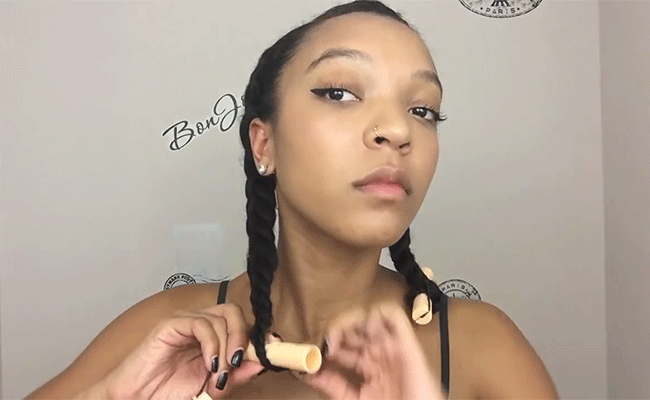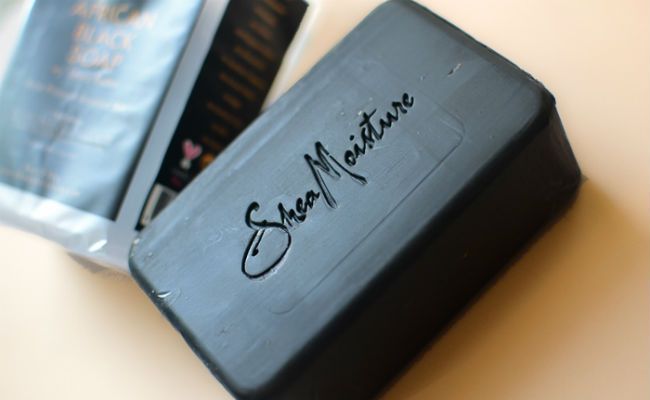Search Results: Vanessa Osbourne

We love sweater weather just as much as the next girl, but in this cold, dry air there’s a good chance your hair is struggling to stay moisturized and vibrant. If your curls are not looking their best, here are a few effective ways to bring them back to life.
Protein treatments
Protein treatments are great for strengthening hair and helping to combat breakage. There are manytypes of protein treatments ranging from mild to intense, depending on your hair needs. The more severe your breakage and splits, the stronger the treatment you’ll need. You may find that incorporating a conditioner that contains proteins like Aubrey Organics GPB Conditioner into your regimen is enough for you, but if you are dealing with heat damage, or have color-treated your hair, then try a stronger solution like ApHogee’s 2-Step Treatment or Joico K-Pack Reconstructor.
Hot oil treatments
There is nothing like a hot oil treatment to keep hair soft, silky, and supple. When done consistently, hot oil treatments can boost hair’s natural shine and help tame frizz. They can be customized by blending your own mix of oils (or just sticking to your favorite one”>, and adding herbs, or essential oils to meet your hair needs. Half the fun is experimenting with different oils and blends, and seeing how your hair responds. A few of our favorites are olive oil, jojoba oil, and almond oil.
Deva Cut
If your curls have lost their round, bouncy shape, then there is a chance your cut is working against you. The Deva Cut is a way of cutting textured hair in its dry, curly state, and addressing the curls individually. This method of cutting curly hair was introduced to the world by Lorraine Massey who also brought us the Curly Girl Method. If you wear your hair in its naturally curly state often and haven’t yet found a haircut that you love, consider trying a Deva Cut. If it has been a while since your last haircut, you may be dealing with dry, knotted ends that are weighing down your curls. A new cut could be the answer to creating shape, movement, and volume. Trust us, it’ll give your hair a new lease on life.
The greenhouse method
The greenhouse method was created as a replacement for lengthy, time-consuming hair regimens that require trips to the salon. To practice the greenhouse method, apply a natural oil or butter to your dry or slightly damp hair, put on a plastic shower cap, and secure your plastic cap with a scarf and a bonnet. You can leave this on for 15-30 minutes, or even overnight. This uses your own body heat to create a hydrating environment for your hair and allows it to absorb as much moisture as possible. Many curly hair issues, from frizz to breakage, are rooted in a lack of moisture, so the greenhouse method may be a quick fix for your hair woes.
Protective/low manipulation styling
If your hair has been going through a lot of manipulation and stress, it is always a good idea to consider sending it on vacation by installing a protective, or low manipulation style, in conjunction with any of the treatments and methods above. A protective style is one that tucks away and protects your ends and the length of your hair from exposure to the elements and contact with your clothes, pillow, and more. Popular protective styles include braids, twists, updos, and wigs, and can incorporate extensions, but they can also be as simple as a loose bun, or wearing a hat. Once you’ve brought your hair back to life, there’s no point in running it ragged again and undoing all the benefits you received by treating and cutting it. Give your hair and yourself a rest. When you go through those periods of missing your curls and feeling an intense desire to style and manipulate them, simply remind yourself that fabulously heathy hair will be your reward.
Are there any methods you rely on to bring your curls back to life?
I knew Winnipeg would be…cold.
However, being Jamaican born and bred, my concept of cold was far from the Canadian experience. Winnipeg gets colder than you can imagine, unless you can imagine -35oC. I couldn’t. Prior to moving to Canada, tropical temperatures of above 30oC were my day to day norm. Anything approaching 20oC was unbearable for me and I abhorred air conditioning. Since Jamaica is warm and humid, stretched styles never stay stretch for long and shrinkage was real.
Natural hair products are readily available in Jamaica.
There are a number of quality brands–from Jamaica and elsewhere–that are available on the ground. Shipping products from the US is also very easy if you’re in Jamaica. In addition, to ease of access to quality natural hair products, Jamaica also has quite a few hair meetups and expos that help make a natural hair journey that much more enjoyable.
Months before my move to Canada, I started hoarding hair products.
I had done some online research but still couldn’t figure out what the natural hair scene would be like in Winnipeg, so I figured I’d better come prepared. I didn’t want to have to worry about taking care of my hair or my six-year-old daughter’s hair while we were adjusting to our new environment–it’s a good thing I did.
I quickly realized the natural hair scene was barren here in Winnipeg.
Most of the women with natural hair seem to wear braids more often than not. There were no beauty supply stores anywhere. Sometime later, I came across a Sally Beauty supply store–but still, the selection of products for my type 4 hair is sparse. I realized their online store didn’t ship one of my fave brands, SheaMoisture, to Canada. In addition to that, some online retailers on Amazon.ca try to offer a single Curl Enhancing Smoothie for $70! Needless to say, things did not appear very promising in the beginning.
My new environment wants my natural hair to be dry.
As I mentioned before, Winnipeg is cold. This has resulted in my hair experiencing less shrinkage, thus shortening my detangling time because my hair tangles less. But I also have to be diligent about moisturizing at least twice each day.
Being a lazy natural has actually worked to my advantage in protecting my hair from this cold climate. I wasn’t always a lazy natural, but as my hair has grown longer, I find that I spend less and less time on styling.
How my wash day has changed
On wash day I do the whole shebang: pre poo, wash, deep condition once a month.
I keep my hair mostly in medium-sized twists that I wear in a ponytail, I really don’t have time to do more than that because I have my daughter’s hair to maintain as well as well as all the duties that come with taking care of a household and holding down a full time job.
I couldn’t figure out what the natural hair scene would be like in Winnipeg, so I figured I’d better come prepared.
When going to work my head is always covered for warmth and many times my hair is covered indoors as well. Working as a paint chemist in an industrial manufacturing environment means jeans and t-shirts under a lab coat and head gear is not frowned upon. That’s been a huge relief because in Jamaica, I was still required to dress like the administrative office staff, which means I had to be more concerned about my hairstyle. There, a beanie would not have met with the dress code, but now I can pretty much roll out of bed, put a beanie or a wool cap over my satin cap, and go.
I’ve kept my hair healthy and moisturized the first six months in Winnipeg by doing the following:
-
Washing less frequently–on average every 3 to 4 weeks
-
Consistent deep conditioning–I deep condition with every wash
-
Moisturizing twice daily.
-
Reduced manipulation–I style my hair no more than twice week.
-
Wearing protective styles and covering my hair to protect it from the cold climate.
How did you adjust to a different climate with natural and curly hair?
“Heaven in Hair” is a big name to live up to.
Naturally, with a name like that I wanted to know if DevaCurl Heaven in Hair Intense Moisture Treatment would provide my hair with the intense moisture and conditioning its name suggests or if I’d end up being disappointed. Heaven in Hair is a sulfate-free, paraben free, silicone free and cruelty free product. And I must say…so far, so great!
First 5 ingredients
The first five ingredients of this deep conditioning treatment are water, glycerin, cetearyl alcohol, cetyl esters and glycol distearate. Water, glycerin and cetearyl alcohol are great for providing moisture and cetyl esters, glycol stearate and cetearyl alcohol are excellent ingredients for creating slip. All in all, after reviewing the ingredients list, I was prepared to be pleased. When it comes right down to it, I was.
First impressions: appearance, scent, consistency
Heaven In Hair has a pearlescent, pale green color. It is thick and creamy and glides easily between the fingers. It leaves behind a slight waxy residue when rinsed from the fingers which I have used as an indicator in the past to determine how much slip a product is likely to have. I could tell by rubbing the product between my fingers that this product would have amazing slip. The smell is very artificial and is my least favorite thing about the deep conditioner.
Where to get it
I received this product as part of a care package from NaturallyCurly (this review is not sponsored”>. It is available from Shop.NaturallyCurly.com and the usual online stores and retails at around $25 for an 8 oz. jar. That’s pricey for the curly girl on a budget, but it is a good investment if looking for a luxury product that you pull out when you really need the big guns.
Yes, it’s an expensive product, but it also spreads really well, so a little goes a long way.
How I used it
Typically, I use a traditional conditioner to detangle before I deep condition my hair. I’ve done this because no matter how moisturizing most deep conditioners are, they usually do not provide me with enough slip to detangle my type 4 hair with reasonable ease. When using Heaven In Hair I skipped my regular conditioner and went straight to deep conditioning after I shampooed my hair.
Conclusion: will I replace this one when it’s empty?
I absolutely loved this moisture treatment. It has a great deal of slip and made detangling my hair very easy. Usually, I have to detangle my hair in at least ten sections. I was able to do so with only six sections when using this product, which meant way less time in the shower. I also got through each section in record time and before my fingers started pruning in the shower.
In addition to reducing my detangling time this product also left my hair feeling very moisturized and very soft. This is definitely an item I will keep in my regimen. Yes, it’s an expensive product, but it also spreads really well, so a little goes a long way. Even on my tightly coiled and dry hair and with my tendency to be heavy handed.
[prodmod]
Have you tried Heaven in Hair? What did you think? Let us know.
Slip is everything. Slip is life.
Every curly girl knows that when it comes to conditioners. Slip in a product refers its lubricity, i.e. its ability to reduce friction so that strands of hair can slide past each other (instead of becoming tangled”> and detangling tools can pass through the hair with relative ease. The amount of slip a product provides is an indicator of how easily knots and tangles will become undone when you slide a comb, brush or fingers through the hair after you’ve applied that particular product.
A conditioner with lots of slip will lessen the amount of time it takes to detangle your hair and allow for detangling to be achieved occur with less damage to the hair. Conversely, little to no slip will increase the amount of time required to undo tangles and knots, increase damage to hair. This is particularly important for those of us with textured hair.
When trying to determine if a particular conditioning product is likely to have slip there are a few key ingredients to look for. Some of these ingredients are vegetable oils and butters, fatty alcohols, hydrolyzed proteins and detangling herbs such as slippery elm and marshmallow root.
1. FATTY ALCOHOLS
- they release existing tangles and prevent new ones from happening
As a general rule, curly girls avoid alcohol containing hair products as they may dry the hair out making it brittle and prone to breakage. Drying alcohols are small alcohol molecules that tend to evaporate quickly. Think of the alcohol swab they use to clean your arm before an injection or rubbing alcohol your mom used to rub on your skin to help bring a fever down. Fatty alcohols are much larger molecules and do not volatilize at a fast rate. Their larger molecular sizes give them an oily, slippery feel which in turn provides the slip to your favorite conditioner. Fatty alcohols are emollients, which means they have the ability to soften skin and hair. This property makes fatty alcohols a common ingredient in conditioners and lotions. The most common fatty alcohols are stearyl alcohol, cetyl alcohol and cetearyl alcohol. Fatty alcohols coat the strands and hold the cuticle flat to create a smooth surface. This helps to release existing tangles and knots and prevent the formation of new ones during the detangling process, according to The Natural Haven Bloom.
2. VEGETABLE OILS & BUTTERS
- they smooth the cuticles and reduce friction during detangling
Vegetable oils such as olive oil and coconut oil and butters such as shea and cocoa butters are great at coating strands, smoothing the cuticles and allowing strands to slide past each other with reduced friction, according to Science-Y Hair Blog. This reduction in friction makes it possible for strands to slide past each other causing knots and tangles to become undone and making it unlikely that new tangles will form while the hair is being detangled.
3. HYDROLYZED PROTEINS
- they fill in the gaps of raised cuticles and easily absorb into the hair
Hydrolyzed proteins are proteins that have been split into smaller units by the process of hydrolysis. Hydrolysis is a type of chemical reaction in which water is used to break bonds within a molecule. Since hydrolyzed proteins have been broken into smaller molecules they are easily absorbed into the hair strand filling in gaps and smoothing the cuticle layer. Smoother cuticles reduce the risk of knots and tangles being formed as the cuticle sheets are closed and so not able to snag onto raised cuticle sheets from neighboring strands. Types of hydrolyzed proteins to look out for are hydrolyzed silk protein, hydrolyzed wheat protein and hydrolyzed soy protein.
4. DETANGLING HERBS
- they soothe the scalp and coat the hair strands for better conditioning
Detangling herbs such as slippery elm, flaxseed and marshmallow root are popular ingredients in detangling products because of their ability to add slip and smooth and condition the hair, according to My Natural Hair Growth. These herbs are able to form thick gelatinous substances that coat the hair strands and allow fingers, brushes and combs alike to glide right through the hair. In addition to adding slip these herbs can also soothe the scalp, soften and moisturize hair.
Does slip matter to you?
If you’ve been looking for a way to shorten your detangling sessions that be on the lookout for products containing the ingredients we’ve mentioned above and if you’re feeling adventurous some homemade detangling sprays utilizing the herbs above are a definite must try.
Every once in a while something catches me totally by surprise. You would think that after more than three decades on earth and with a culture driven by social media this would seize to happen and nothing would surprise me anymore. (But yet again something has.”> My latest surprise is the new glitter beard trend. Even after seeing the name, I couldn’t conceive what this trend could possibly be about–I was sure it wasn’t supposed to be a literal description. But it is! Men with beards full of glitter and not just beards but eyebrows and moustaches and sideburns.
Chances are you have seen these images all over your Instagram, YouTube, and Tumblr feeds.
In this day and age, everyone wants a piece of the pie. Not to let something as insignificant as a lack of a beard stop us, women have taken the glitter beard trend and made it our own and with that the glitter roots was born. Glitter roots can be more than just decorative; they can be functional, too. Some women are using glitter to hide dark roots growing into bottle blonde hair. Customize the trend to suit your own tastes due to the variety of color, textures and sizes in which glitter is available. You can use a little or you can use a lot, the possibilities are pretty much endless. Just the way we like them!
Whitney aka Naptural85 has recently uploaded two videos that are all about adding glitter and sparkle to hair. One is a confetti bun hair tutorial that utilizes synthetic hair which is perfect style for anyone who wants to add the sparkle and shine but would prefer to not get it on their own hair and scalp. The second video is a do-it-yourself glitter gel pomade tutorial which again is perfect for the holiday party season.
Knowing how much of a challenge it can be to remove particles that get stuck in textured hair, some of you might be a bit wary about adding glitter to your hair, particularly if your curls and coils are super tight. Do not despair–there are simple glitter removal techniques that you can use for getting glitter out of your hair, off your clothes and wherever else glitter might have fallen.
THE REMOVAL PROCESS
Here are some tips from hairstylist Matt Fugate: Apply hair spray on to a sheet of paper towel until paper towel is damp. Press the wet paper towel onto the glitter so that glitter sticks to the hair spray. The hairspray acts as adhesive for attracting the glitter to the paper towel and away from the hair. If you’ve used a lot of glitter it may take some time to remove it and you might not be able to remove all the glitter in one session. When trying to remove glitter from everything else (such as clothes and furniture”>, a piece of tape or a lint roller generally work well.
There’s no better time to try the glitter beard and roots hair trend than that New Year’s Eve party you’re planning to attend. If you have already tried this trend then please share your experience on StyleNook!
Happy New Year, NaturallyCurly world!
.
Conditioners are absolutely essential when it comes to taking care of textured hair. Among their many functions, conditioners are meant to restore moisture to dry, stripped hair, improve manageability, add shine and strengthen your textured hair.
Fine hair is more prone to split ends, breakage and frizz, so you need a conditioner that will not only moisturize, but add volume without weighing your curls down or causing product build-up.
Here are ten conditioners under ten dollars that are specially formulated for fine hair.
1.Desert Essence Jojoba Conditioner Strengthening
With exotic ingredients such a murumuru butter and prickly pear, this conditioner promises to melt your tangles away leaving hair super soft, manageable and shiny. Natural keratin adds strength to fine hair to help fortify strands making hair resistant to breakage.
2.Tresemme Vitamin B12 & gelatin Anti-Breakage Conditioner
Like other Tresemme conditioners, Tresemme’s Vitamin B12 & Gelatin Anti-breakage conditioner has tons of slip and comes in those large sizes that naturals love, giving you a lot of bang for your buck. Readily available in beauty supply stores and online, Tresemme Vitamin B12 & Gelatin Anti-breakage conditioner will strengthen fine hair and combat split ends and breakage. Hair is manageable and revitalized after use.
3. Trader Joe’s Tea Tree Tingle Conditioner
A blend of certified organic botanicals, including peppermint and tea tree work together to clarify your scalp and gently remove product build-up. It’s sulfate-free and moisturizes your fine hair while alleviating your dry winter scalp. Nourishing eucalyptus, thyme, birch leaf, and chamomile oils are included, too.
4. SheaMoisture Yucca & Baobab Volumizing Conditioner
Chock full of vitamins to keep hair strong and yucca to add volume, this all natural conditioner from SheaMoisture promises to fortify, condition and detangle without build and transform lifeless hair to hair that’s full of movement and volume. What more could a fine-haired girl want?
5. Joico Silk Result Result Conditioner- Fine/Normal Hair
This pH balanced conditioner seals hair to lock in moisture and enhance shine. Containing an exclusive blend of amino acids, Joico Silk Result Conditioner will fill in the caps in the structures of hair’s cuticle and cortex to help restore hair’s strength.
6. Goldwell Curl Definition Conditioner- Light
With UV filter to protect hair color from fading and protect undyed hair from sun damage, this conditioner provides moisture and shine to leave fine hair renewed.
7. Burt’s Bees Very Volumizing Pomegranate & Soy Conditioner
Gives fine hair a boost of volume and body. Contains honey to help keep hair moisturized, shiny and supple.
8. Nature’s Gate Organics Mandarin Orange & Patchouli Shine-Enhancing Conditioner
With a list of benefits as long as its name, Nature’s Gate Organics Mandarin Orange & Patchouli Shine-Enhancing Conditioner protects color treated hair from UV damage with a blend of wheat protein and sunflower seed extract. Hair is more manageable, shiny and full of vitality after use.
9. Infusium 23 Revitalizing Conditioner for Fine, Thin Hair
This clean rinsing formulation moisturizes hair without leaving any residue behind. Protects hair color and restores hair’s manageability and shine.
10. Alagio Citrus Boost Thick Conditioner
Gives hair volume and movement with no product residue. This frizz busting conditioner is enriched with rice protein and ginger root and leaves hair full and shiny.
[prodmod]
Prevention is better than cure. This is the fundamental principle on which Ayurveda is based.
Ayurveda (or ayurvedic medicine”> is a whole body, holistic, healing system that was developed in India many thousands of years ago, according to medical professionals for Wed MD. It believes that the best way to fix problems is to never let them occur in the first place. The aim of Ayurveda therefore is the promotion of health instead of the fighting of disease. Good health in Ayurveda is achieved when mind, body and spirit are in harmony with the universe and it is believed that if this balance is disturbed, ill health may result.
One way of achieving this harmony between body, mind, spirit and the universe is through Ayurveda Indian scalp massages. Ayurveda Indian scalp massages are one aspect of a preventative hair care regimen and are believed to be important for nourishing the scalp and hair topically as well as being a great tool for relaxing the nervous system and mind thereby promoting overall well-being.
The Benefits of Ayurveda Indian Scalp Massages
According to Bay Area yoga instructor and author Shreelata Suresh, when this is done a minimum of once a week (depending on your hair type”>, you will start notice these benefits from an Ayurvedic scalp massage routine:
-
Improved memory and better clarity
-
Increased relaxation
-
Reduced tension
-
Lubricated scalp, thereby helping to stop dry scalp and flaking
-
Nourished, softer hair
-
Shine and luster
-
Improved blood flow and circulation to scalp and neck
-
Makes hair more manageable
-
Helps make hair more resilient over time and so less prone to damage
-
Promotes sound sleep at nights
Which oil-herb combination should you use?
All you need to do an ayurveda Indian scalp massage are your fingers and a warm oil that has been infused with herbs. The herbs are chosen in order to boost the efficacy of the massage and to address the needs of each hair type. There are three hair types that determine the base oil and herb combinations used. The three hair types are:
-
Vata hair: thin hair that is prone to split ends
-
Pitta hair: fine hair that is prone to thinning and greying prematurely
-
Kapha hair: hair that is thick and oily
As with hair texture, it is possible to have more than one type of hair so when choosing your oil blend combination, your predominant hair type is the deciding factor.
- Almond oil or sesame oil are great base oils if you have fine hair that is prone to split ends (vata”>.
- Coconut oil is great for pitta hair types i.e. fine, prematurely thinning and greying hair while olive oil is a good choice if your hair type is predominantly kapha.
- Herbs such as hibiscus helps maintain hair’s color and vitality.
- Jasmine oil aids in reducing stress.
- Brahmi helps fights dry scalp and flaking and is infused into base oils to provide additional benefits to the massage.
- Lavender and rosemary are also great, as they promote growth and help balance oil production and are excellent for all hair types.
How to do an Ayurvedic Hair and Scalp Self Massage
Here are the steps Banyan Botanicals suggest:
-
Heat the oil to a comfortable temperature. It should be warm but comfortable to the touch.
-
Sit upright.
-
Pour oil in your palms and apply to hair. Using your finger tips to spread oil over every strand
-
Apply a tablespoon of oil to the scalp area of the crown of your head. Massage the oil into either side of the head.
-
Bring your head forward so that your chin makes contact with your chest. Pour oil along your hairline at the back of your head.
-
Using your fingertips once more, spread the oil all over the back of your head and continue with you massage. Don’t forget to massage your neck.
-
Use small circular motions and apply firm pressure.
-
Cover hair and scalp and let sit for at least twenty minutes.
-
Wash hair with a gentle cleanser to remove excess oils.
Make the most of your scalp massage
It’s a good idea to play soothing music, dim your lights or light your favorite candle during your massage. Take slow, deep breaths and focus on clearing your mind. All of these will help make your massage more relaxing. Remember, this massage isn’t just for your hair but for your overall holistic well-being.
To dye or not to dye while pregnant? That is the question!
Being pregnant is a unique experience for every woman. It’s a time of change–emotional and physical highs and lows. With all the changes you go through, you may feel a burning desire to exert some control. If you’ve become used to dying your hair regularly, you may want to continue with this part of your beauty regimen. If you’d never dyed your hair before, you may think of it as a way to boosts your spirit, a way to have a bit more power over your appearance as your body continues to change.
Will dyeing your hair pose a risk to your unborn child?
Thought it is limited, there is scientific data regarding the safety of dyeing your hair while pregnant. There is at least one study by Baby Centre UK that suggests that using hair dyes during pregnancy may result in neuroblastoma, a rare childhood cancer, however the bulk of the existing research does not support that finding. American Pregnancy have conducted animal testing that suggests there is no risk to your developing child if you choose to dye your hair. The general consensus is that the concentrations of potentially harmful chemicals found in hair dyes are too low to pose any harm to you or the developing fetus especially where skin (scalp”> contact is avoided. For this reason, processes such as streaking, highlighting and frosting are more widely encouraged than full color coverage, according to Baby Center.The general consensus is that the concentrations of potentially harmful chemicals found in hair dyes are too low to pose any harm
Your hormones may affect the chemicals’ ability to work
Years ago when I was pregnant with my daughter, I was still relaxing my hair–I went natural after her birth. I remember going to the salon twice during my pregnancy and both times, I left with hair that had refused to take the relaxer. I learned that my pregnancy hormones had affected my hair to the point that it no longer responded to those chemicals. Even my first postpartum attempt at relaxing my hair did not work. The fact is that pregnancy alters the hair. It can change its density and texture as well as how the hair responds to chemicals. It is impossible to say how and if your hair will be affected but it is worth considering when trying to decide if you want to take the step and color your hair.
The fact is that pregnancy alters the hair. It can change its density and texture as well as how the hair responds to chemicals.
Take the following precautions when dyeing your hair
If you have chosen to dye your hair while pregnant, incorporate these tips into your coloring routine (many of them apply beyond pregnancy”>.
- Delay dyeing for as long as you can. Second trimester is good. Third trimester is even better.
- Use exactly as directed.
- Do a patch test to make sure you’re not allergic
- Ensure the area you dye your hair in is properly ventilated
- Protect hands by wearing gloves
- Ensure you rinse all traces of chemical from your hair
Is there a safer alternative to chemical hair dye?
Vegetable dyes with a henna base are considered safer alternatives for changing your hair color. Ammonia is one harmful ingredient that you want to avoid at all costs, so pay close attention to the contents of any hair color you use to ensure you know exactly what you are getting.
As always, consult your primary doctor and do research before making a change. Should you decide to go ahead and change up your hair color, visit a licensed hairstylist and colorist to discuss the potential options.
Wavy hairstyles are excellent at creating volume and movement in the hair which makes them particularly appealing to those with finer hair textures.
When styling hair in general and fine hair in particular you want to use enough product in order to achieve moisture and hold but not so much product that hair becomes weighed down. It is also best to start with hair that is clean and damp but not soaking wet. Damp hair will allow just enough shrinkage in order for the new wave pattern to set. Hair should also be stretched in order to achieve best results when attempting wavy hairstyles. Click here for 4 heatless ways to stretch your hair.
When looking to achieve waves in the hair particular attention must be paid to the size of your sections. For looser waves use bigger sections and do the opposite if smaller waves are what you’re hoping to achieve. Your hair length will be an important factor in determining the best sizing for sections. Here are 5 heatless ways to create waves.
1. Flexi Rod Set by CurlyPenny
Keep your sections on the large side depending on the length of your hair. If your hair is medium length to long then you should use no more than 8-10 flexi- rods.
-
Part hair so that it falls in the same manner that you want your final hairstyle to fall.
-
Take a medium sized section of hair. Your total sections can be anywhere from 6 to 10 depending on the length of your hair.
-
Install your flexi rods. You want to choose a fairly large size. 7/8” is a good size for creating waves in medium length hair.
-
Let set overnight and then undo your flexi rods
-
Separate and fluff for maximum volume or to create your desired final look

2. Headband Waves by Luxy Hair
- Part your hair in the center or on your favorite side
- Ensure hair is free of tangles
- Place the headband on top of the hair so that it just rest on your forehead and not your edges
- Take a medium sized section of hair and twirl it around your finger, creating a coil
- Loop the coiled hair over the headband
- Loop coil as many times as necessary depending on the length of your hair
- Repeat steps 4-7 until all your hair has been coiled and looped around the headband
- Let your hair completely dry and set before uncoiling and removing the headband
3. Mermaid Waves by M. Hampton
-
Create a center part down the center of your head
-
Flat twist one side and secure the ends with a hair tie, bobby pins, perm rods or by making a small bantu knot
-
Create the second flat twist and secure ends.
-
Allow to set overnight then undo the twists and fluff
pictured: TeAmoAaron
4. French Braid-Out Method by TeAmoAaron
-
This method requires three french braids or cornrows to be made.
-
Make your parts so that your hair will fall in the direction that you want your finished look to
-
Create your cornrows and secure ends with perm rods
-
Allow to set overnight
5. Magazine Curls Method by BeautyKLove
Got old magazines lying around? No problem. Here’s a great way to put those old magazines to work. If you have hair that is particularly kinky you will want to ensure that it as a smooth as possible.
-
Remove a page from your magazine and fold it over on to itself an inch at a time until the entire sheet is folded.
-
Take a section of your slightly damp and stretched hair and wrap it around the paper as if the paper were a flexi rod.
-
Fold the end of the paper like you would the extra portions of a flexi rod and secure with bobbi pins
-
Repeat until entire head is done
-
Air dry overnight then undo sections
-
Fluff and style for desired look
Which of the above methods are you excited to try this season?
What is African Black Soap?
African Black Soap, also known simply as Black Soap, is a type of body and hair cleanser. It is made from the ash of roasted plant materials such as plantain skins, cocoa pods and the leaves and bark of palm and shea trees. The ash is added to a combination of shea butter and other oils such as, but not limited to palm and coconut oils.
African Black Soap is made from the ash of roasted plant materials such as plantain skins, cocoa pods and the leaves and bark of palm and shea trees.
The type and quantity of oils used are determined by the area in which the soap is made.
Traditionally, African Black Soap is made in West African countries, most notably Ghana. Each community has its own unique recipe and special methods for soapmaking. These differences in recipes and techniques result in subtle–and sometimes, not so subtle–variations in its appearance, texture and effects produced.
[prodmod]
If the soap is made in Africa, another common name is Raw Black Soap. This unrefined version is usually sold in bulk packaging, in contrast to the black soap that is manufactured in the US and Europe. Varieties of the latter generally contain artificial ingredients and are sold in the more traditional, Western soap box packaging.
Who should use African Black Soap?
Black Soap is beneficial for use on skin and hair. Consistent use as a part of an all-natural skin and hair care regimen will provide benefits that include:
-
Even skin tone from fading dark spots and other skin discolorations
-
Reduction in the skin’s oil production so that skin is less oily and more balanced
-
Elimination of acne breakouts
-
Treatment of eczema and razor bumps
-
Reduction in the visibility of fine lines
-
Deep cleansing and exfoliating
Black Soap is beneficial for use on skin and hair. Consistent use as a part of an all-natural skin and hair care regimen will provide many benefits.
Because Black Soap is so effective at controlling oil production, some individuals may find it to be overly drying for their particular skin type.
When using it for the first time, it is best to start a once a day regimen to find out how your skin will react. Due to the subtle variations in the soaps produced from different regions and the inherent fluctuation in the properties of the natural ingredients used, it is common to find one batch of Black Soap a bit more or less drying than another. Due to its lack of artificial ingredients such as fragrance and dyes, African Black Soap works well for those people with sensitive skin, including babies and the elderly.
Black Soap can also be used in natural hair care as a shampoo replacement.
Simply place the soap at the scalp and rub against hair lightly. Black soap lathers very easily so one or two strokes will create plenty of lather. As an alternative to placing the soap on your scalp you may rub the soap between the palms of your hands and then transfer lather from your hands to your scalp. Once the soap has been applied, massage into scalp as you would your shampoo and complete your usual hair cleansing routine.
For some persons, black soap may be too stripping for regular washes. If you are one of those persons you may find it more appropriate to use black soap for clarifying. If you’d like the benefits of black soap in traditional liquid shampoo form, you can choose from any of the soap shampoos available on the market. Alikay Naturals and SheaMoisture are two popular natural hair brands that have shampoos based on African Black Soap.
Popular African Black Soap commercial brands
Where to find it?
These brands are likely available in your beauty supply store. Raw (bulk”> Black Soap can be purchased online at Amazon.com and a wide selection of black soap shampoos are also available.

